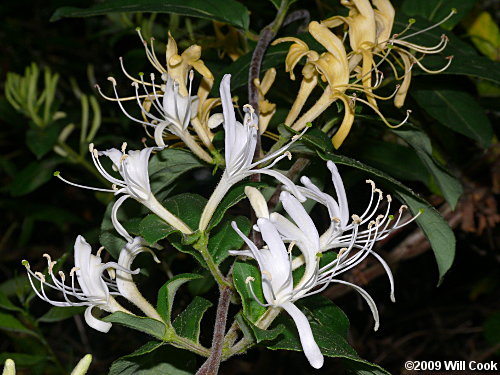
| Japanese Honeysuckle is one of our most common and familiar woody vines. The flowers are attractive and very fragrant, but the vine is extremely invasive. The flowers, which turn from white to yellow as they age, first appear in early May and continue intermittently through fall. Chapel Hill, NC 5/2/09.
|
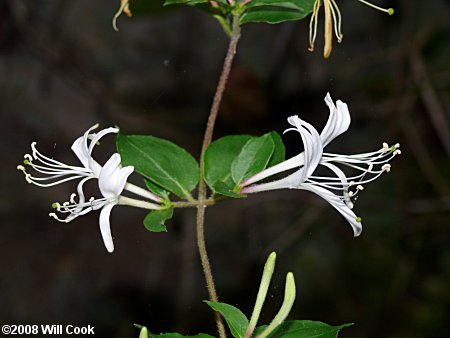
| Orange Co., NC 5/18/08.
|
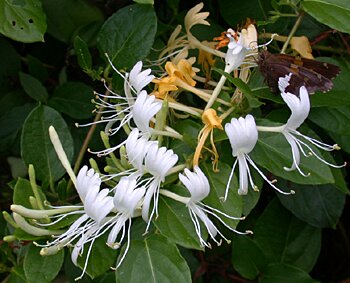
| The flowers are a popular nectar source for bees, butterflies (note the Silver-spotted Skipper at left), and humans.
| 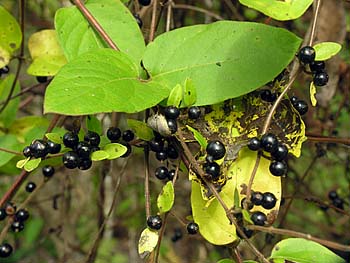
| The black fruits are eaten by birds, which spread the seeds everywhere. Columbia, NC 11/1/05.
| 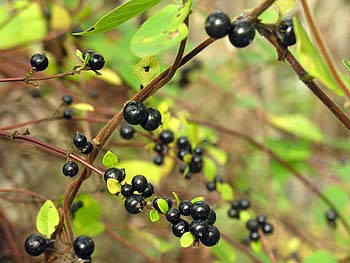
| Columbia, NC 11/1/05.
| 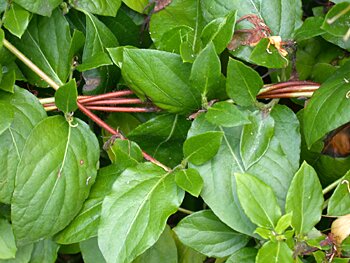
| The evergreen leaves can be confused with those of the much less common native semi-evergreen vine Trumpet Honeysuckle (Lonicera sempervirens), but are usually broader, a more yellow green, hairier, and less glaucous beneath.
| 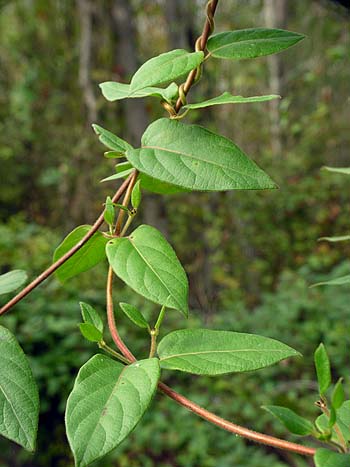
| Japanese Honeysuckle, native to China and Japan, is an invasive weed problem throughout the warmer parts of the world, from Fiji to New Zealand to Hawaii. Columbia, NC 11/1/05.
|
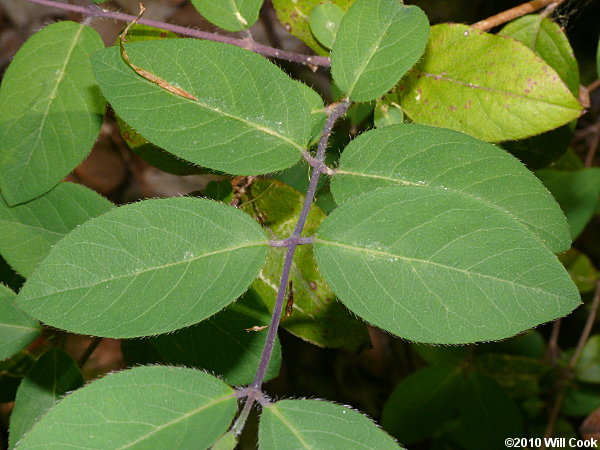
| Newly emerged leaves. Japanese Honeysuckle starts growing early in the season, giving it a head start over most native plants. Chapel Hill, NC 4/10/10.
|
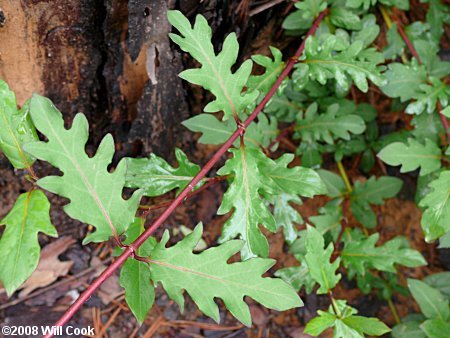
| Fast-growing leaves may look almost oak-like. Durham, NC 4/5/08.
|
More information:
Invasive and Exotic Species of North America
Pacific Island Ecosystems at Risk
PCA Alien Plant Working Group
USDA PLANTS database
Virginia Tech Dendrology
Recommended Tree, Shrub, and Woody Vine Identification Guides
|
|








